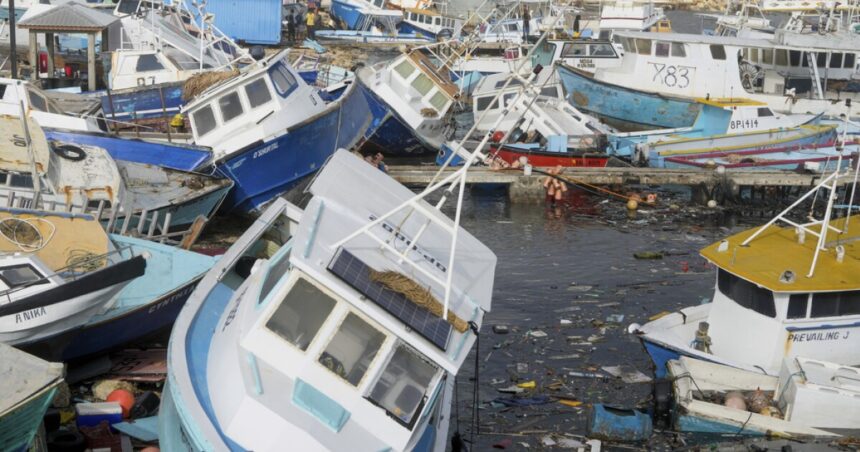Hurricane Beryl wreaked havoc as it tore through Barbados and the Windward Islands on Monday, leaving a trail of destruction as a powerful Category 4 storm.
Reports indicate that at least three individuals lost their lives in Grenada and Carriacou, the initial landfall site of the hurricane. Additionally, one fatality was confirmed in St. Vincent and the Grenadines.
According to The Associated Press, one of the deaths in Grenada resulted from a house being struck by a fallen tree.
In Venezuela, two individuals perished due to severe rainfall in the northern region, with five more reported missing.
The storm’s ferocious 150 mph winds caused extensive damage to homes and structures on the Windward Islands. By late Monday, it had escalated to a Category 5 storm, marking the earliest occurrence of such intensity in the history of the Atlantic.
Grenadian Prime Minister Dickon Mitchell conveyed the grim situation in a press briefing on Tuesday, citing widespread power outages and severe destruction of property. He expressed concerns about anticipated additional casualties.
Carriacou and Petit Martinique bore the brunt of the storm’s impact, experiencing significant devastation from the strong winds and storm surge. Communication with the islands was disrupted, and efforts to clear debris and provide necessary assistance faced challenges due to damage to gas stations.
Mitchell announced plans for an emergency team comprising officials from Grenada and neighboring countries to assess the damage and facilitate recovery operations in Carriacou.
Post-storm images from Barbados depicted numerous boats strewn across the water, illustrating the magnitude of the disaster faced by fishermen trying to salvage their vessels.
Ricardo Mazalan / AP
Hurricane Beryl is now targeting Jamaica, posing a significant threat that is expected to commence on Wednesday. The Cayman Islands and the southern coast of Haiti to the border with the Dominican Republic are under a hurricane watch.
The National Hurricane Center anticipates a slight weakening of Beryl as it traverses the central Caribbean en route to Mexico’s Yucatán Peninsula, although it is projected to retain hurricane status.
Related Story: NOAA expects ‘extraordinary’ 2024 Atlantic hurricane season





